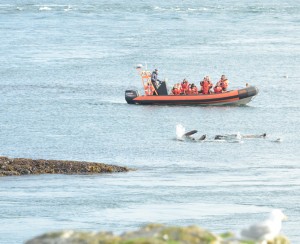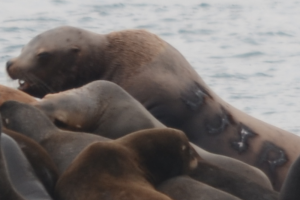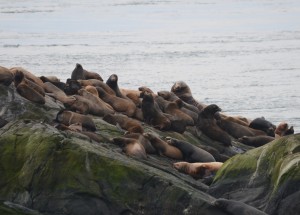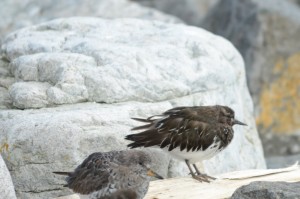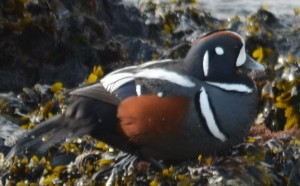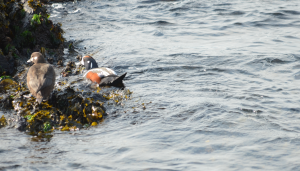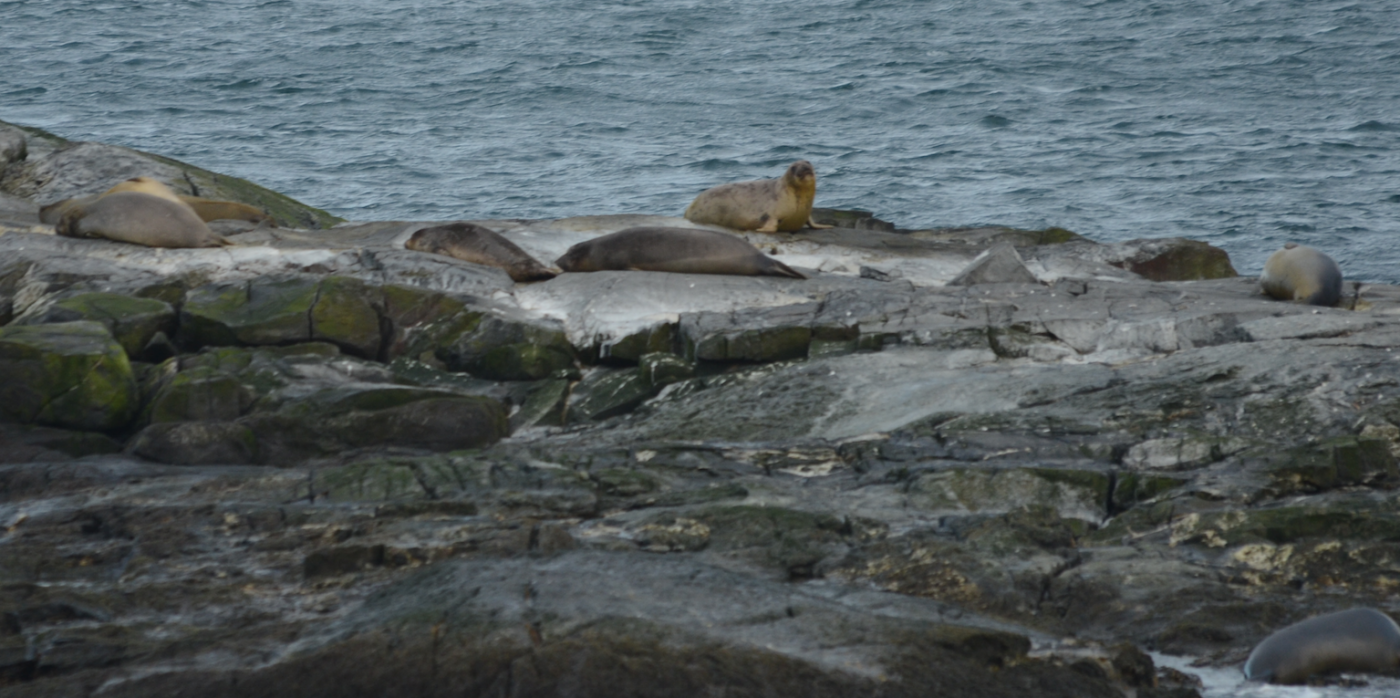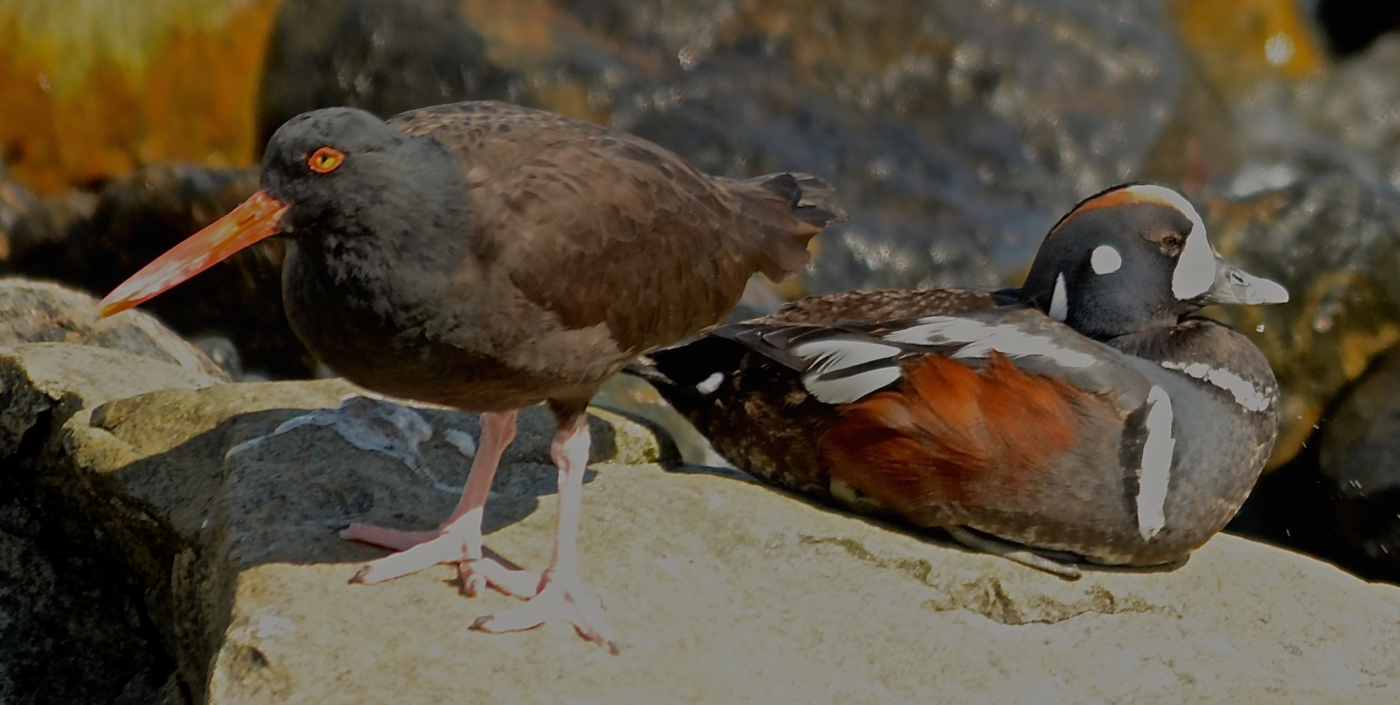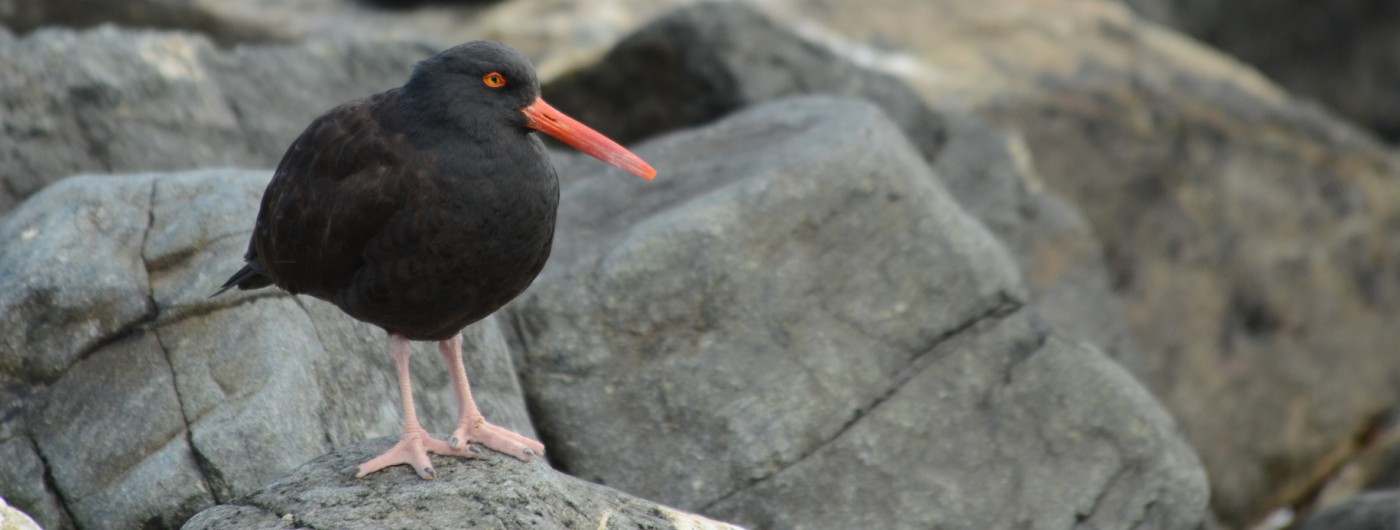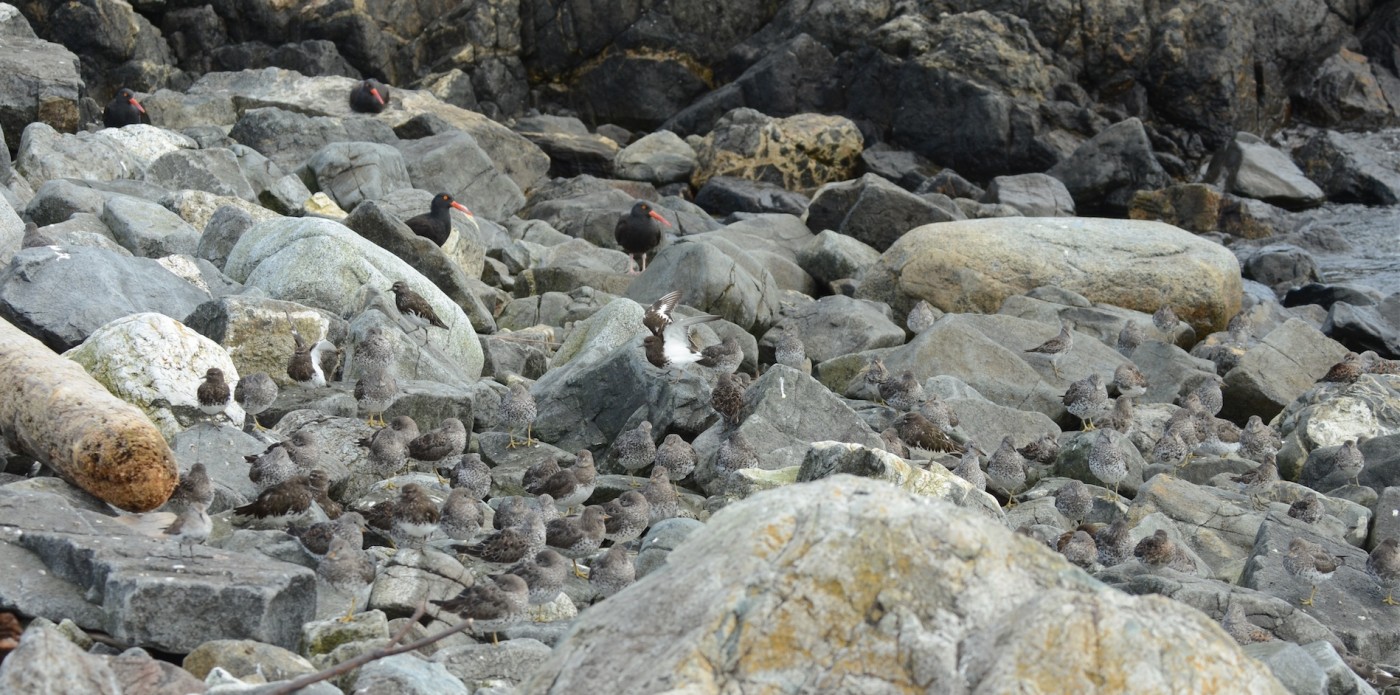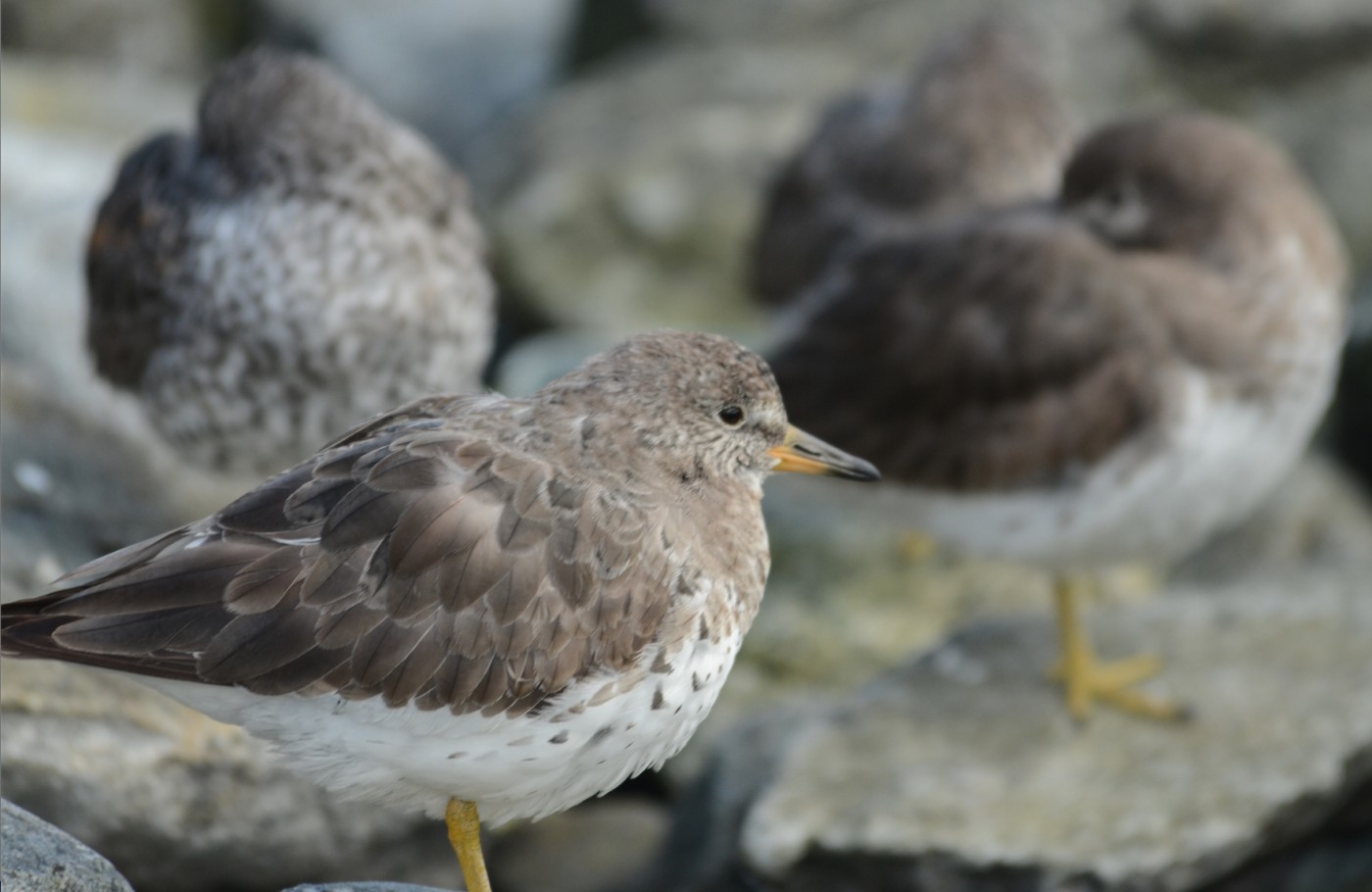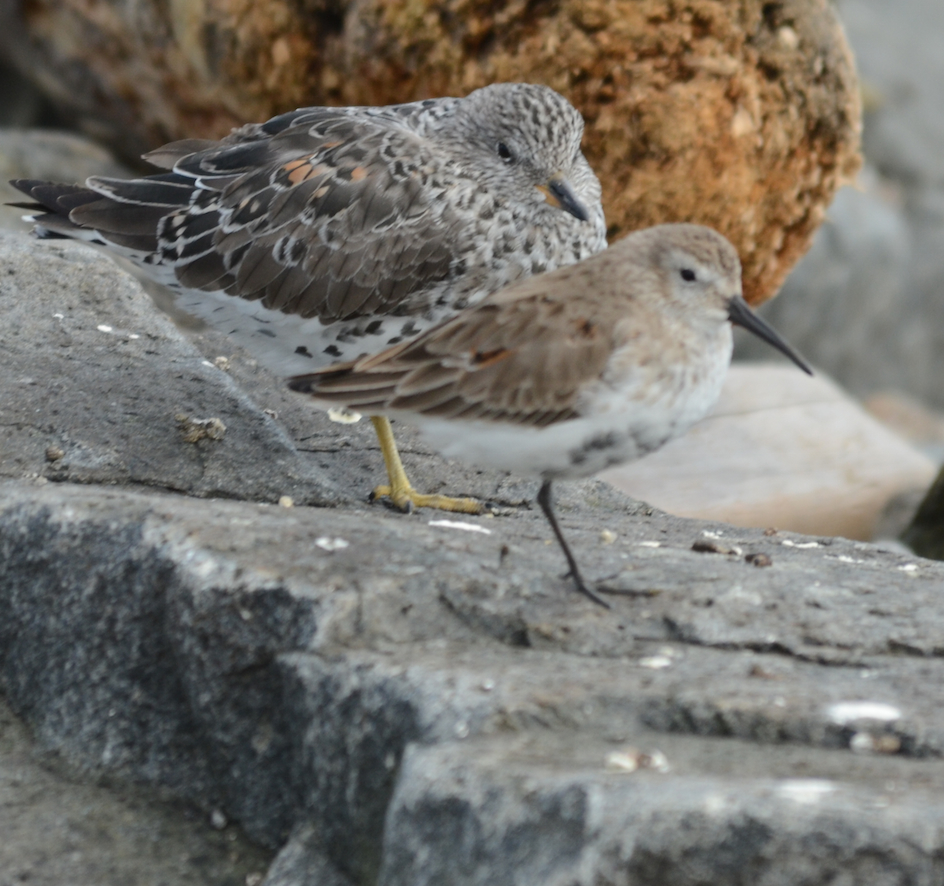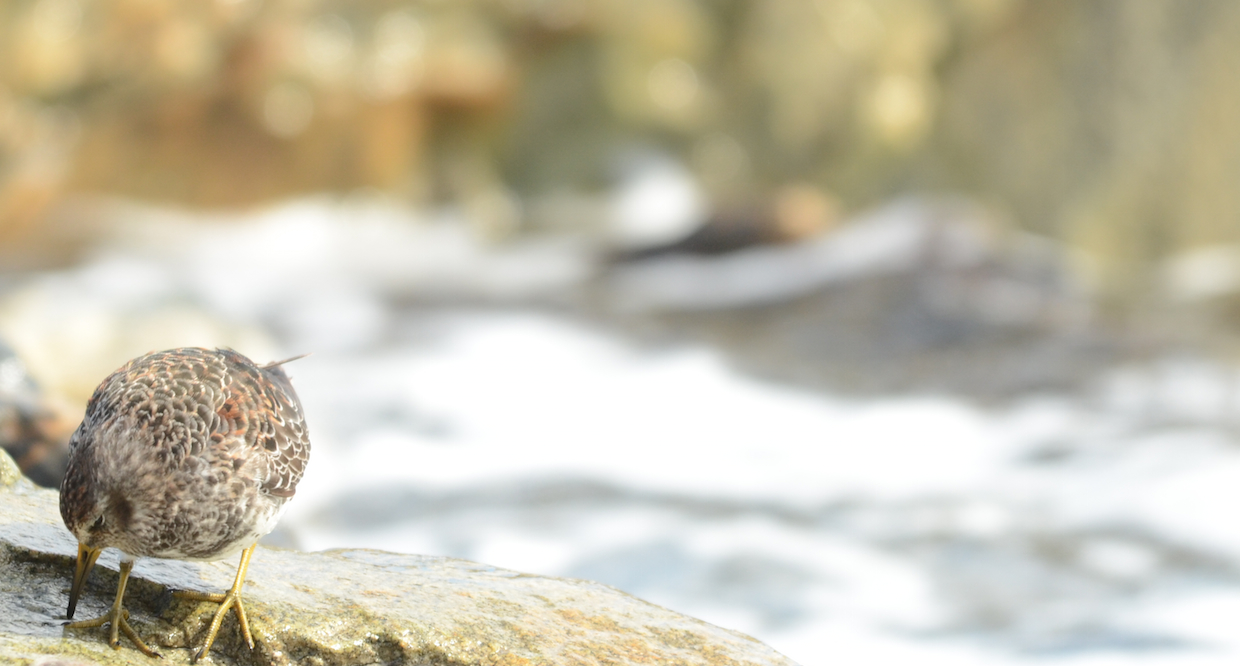Today the weather was like a sandwich, with winter as the bread and spring in the middle. The wind did not relent all day, blowing north by northwest in the morning, with more of a southwest spin, peaking in the afternoon. Now as the sun sets, the wind is easing a little and dramatic rain showers sweep out of the bottom of clouds to the west. The barometer bottomed out late morning and is tentatively climbing now. Tons of new snow on the Olympic Mountains, gives them a magnificent look and brings a chill to the air here only 15 kilometres across the Strait.
I only noted one whale watching boat today but may have missed some while working out of view. Most of the tour boats stop by on the south side to see sea lions hauled out and sleeping in the water there. The photo below was taken a few days ago when the weather was kinder and the animals in the water had just awoken with a start. There were no sports fishers observed in the Ecological Reserve today.
The first thing I noticed this morning was that there were a lot more sea lions hauled out than yesterday (census day). I scanned them with binoculars and noticed right away there was a branded Steller’s or Northern Sea Lion. Even before coffee, which is something for me, I was outside taking photographs. Although the image quality isn’t great due to the distance, it is good enough to match to an individual that was here on September 10, 2014 during my first shift.
This male 533R was branded as a pup in July, 2007 on Rogue Reef. His daytime activity here is practically nil. He lifts his head once and a while to interact with his closely packed neighbours, otherwise he sleeps all day. I wonder if he is full of herring? I also wonder if they forage at night right now?
Glaucous-winged Gulls seem to sit tight during the day now too. I guess they are establishing nesting territories and resting up for parental duties. They all lift off when a Bald Eagle passes over or a Peregrine Falcon swoops around the island but soon settle back in place waiting patiently.
There are many more Pigeon Guillemots in the Ecological Reserve now than can nest here and they seem to like to forage in fairly large groups, right in the rips and standing waves of the big currents. I would like to see one underwater, using their little alcid wings to fly through the water while steering with their wildly red feet.
Eleven visitors graced the island with their presence today and it was good to interact with people again. Michael who is on the Pearson College board and his family came out with Chris and Alex for a tour. Alex, a student at Pearson College was deckhand and tour guide and did an excellent job of both. Chris solved my water woes by simply turning on a valve that I hadn’t managed to get open.
Chores today included unsuccessful trouble-shooting on cameras #2 and #5, disassembling a bunk bed (probably much easier with two people), and moving the bed frame to the foreshore for pick-up. Seawater sampling, fresh water production and electrical generation, balanced out with more wood clean-up and walkway sweeping. The best thing, was putting up a fresh, new Canadian flag to replace the winter worn one that was fraying badly in the wind.

